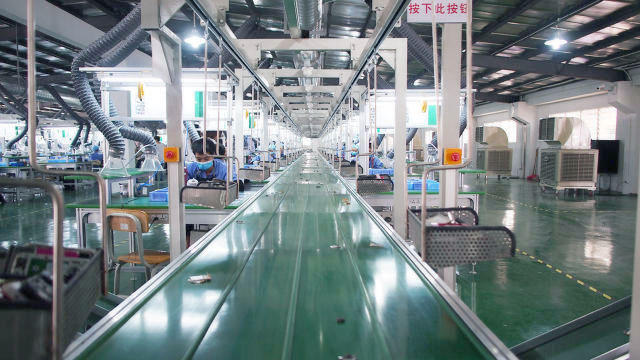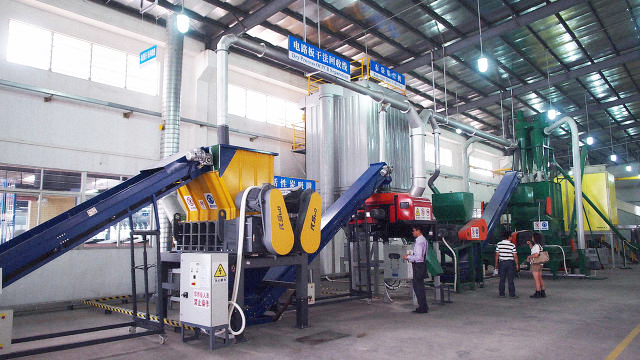Instead of shredding gadgets and melting materials, a Hong Kong company uses tools to carefully separate parts so they can be reused.
When Apple announced that it collected 2,204 pounds of gold from old
electronics through its recycling programs in 2015, headlines speculated that the company made $40 million in the process. That wasn't true: To comply with producer responsibility laws, Apple pays recyclers to handle piles of old gadgets. The value of precious metals might help offset that cost, but it isn't a way to rake in cash.
In fact, traditional recycling—which shreds down old gadgets and then attempts to separate old materials such as gold—is a poor way to recover either the value of components or the environment footprint it took to make them. But recycling is beginning to evolve.

Hong Kong-based Aukte, which operates 21 recycling facilities around the world, is one of the pioneers of newer methods of recycling. Instead of shredding gadgets and melting materials, the company uses new tools to carefully separate parts so they can be reused in something new.
"When you smelted something, you pretty much get nothing from it," says Linda Li, chief strategy officer at LTG. "No value recovery from it. The raw material value barely pays for the cost of recycling. Whereas now there are actually a lot of non-proprietary, generic parts from a defective product that can be reused."
When an old phone or tablet goes through the company's recycling process, first all of the data is erased. Then, after some visual inspection, the gadget is disassembled into parts such as the LCD display and battery pack. This requires specialized tools that are designed to get around products that were never designed to be disassembled into components.
Certain proprietary parts have to be destroyed because manufacturers don't want the IP stolen. But other generic parts can be reused, whole, in new products. An LCD screen from an old tablet could become a screen in the back of a taxi. A camera in a phone might be reused in a toy that needs a camera. In some cases, old phone parts might end up in a new, lower-end phone. Other companies might use them to repair or refurbish old gadgets.
By using whole components instead of materials, it's possible both to recover more financial value and have a much greater environmental impact. If you recycle silver the traditional way, it still needs to be processed into a new part; while you save the environmental impact of digging it up from the ground again, there's often a bigger carbon footprint involved with the rest of the manufacturing process.
In a lifecycle study LTG commissioned, they found that by repurposing an LCD screen alone, they could help a manufacturer save 70%-80% of the carbon footprint. "Traditional methods focus on smelting down the motherboard and maybe recovering some gold and silver, but we have found that actually the motherboard doesn't generate a lot of carbon footprint savings for you at all," Li says. "It's in the LCD."
Traditional recycling might not even touch an LCD at all, because it's mostly glass and doesn't have a financial value. "In our method, you save the whole thing," she says.
The company serves manufacturers such as Microsoft, Apple, Motorola, and Amazon. Other processes are also becoming more sophisticated, like Apple's new 29-arm robot that can automatically disassemble an iPhone 6s.
The challenge, however, is partly getting old electronics to the right places so they can be recycled into higher-value materials. Of the 93 million tons of e-waste that may be generated this year, much of it is likely to end up in dumps. Other gadgets still end up in developing countries, in places where "recycling" might mean burning toxic plastic parts over a fire. The challenge of collection will keep growing: E-waste is growing two to three times faster than any other type of waste.
